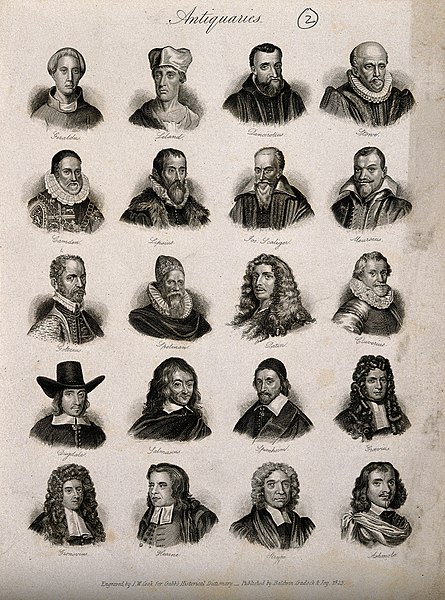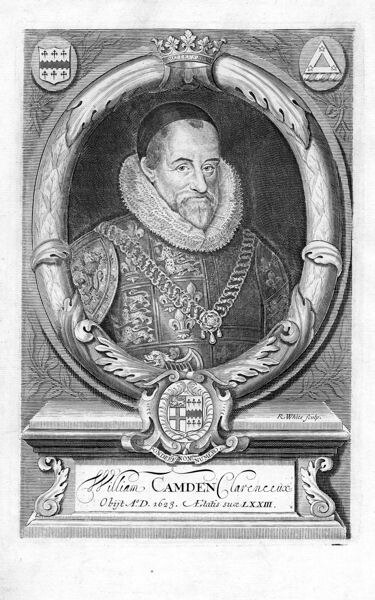The Cotton or Cottonian library is a collection of manuscripts that came into the hands of the antiquarian and bibliophile Sir Robert Bruce Cotton MP (1571–1631). The collection of books and materials Sir Robert held was one of the three "foundation collections" of the British Museum in 1753. It is now one of the major collections of the Department of Manuscripts of the British Library. Cotton was of a Shropshire family who originated near Wem and were based in Alkington and employed by the Geneva Bible publisher, statesman and polymath Sir Rowland Hill in the mid 16th century.
The Lindisfarne Gospels are but one of the treasures collected by Sir Robert Cotton. They are now in the British Library.
The Cotton Genesis was badly damaged in the Ashburnam House fire.
An antiquarian or antiquary is an aficionado or student of antiquities or things of the past. More specifically, the term is used for those who study history with particular attention to ancient artifacts, archaeological and historic sites, or historic archives and manuscripts. The essence of antiquarianism is a focus on the empirical evidence of the past, and is perhaps best encapsulated in the motto adopted by the 18th-century antiquary Sir Richard Colt Hoare, "We speak from facts, not theory."
Ole Worm's cabinet of curiosities, from Museum Wormianum, 1655
"Antiquaries": portraits of 20 influential antiquaries and historians published in Crabb's Universal Historical Dictionary (1825). Featured are: Giraldus Cambrensis, John Leland, Guido Panciroli, John Stow, William Camden, Justus Lipsius, Joseph Justus Scaliger, Johannes Meursius, Hubert Goltzius, Henry Spelman, Charles Patin, Philipp Clüver, William Dugdale, Claudius Salmasius, Friedrich Spanheim, Johann Georg Graevius, Jakob Gronovius, Thomas Hearne,
William Camden (1551–1623), author of the Britannia, wearing the tabard and chain of office of Clarenceux King of Arms. Originally published in the 1695 edition of Britannia.
Pit Mead Roman villa mosaic, illustrations by Catherine Downes, engraved by James Basire and presented to the SAL by Daines Barrington






